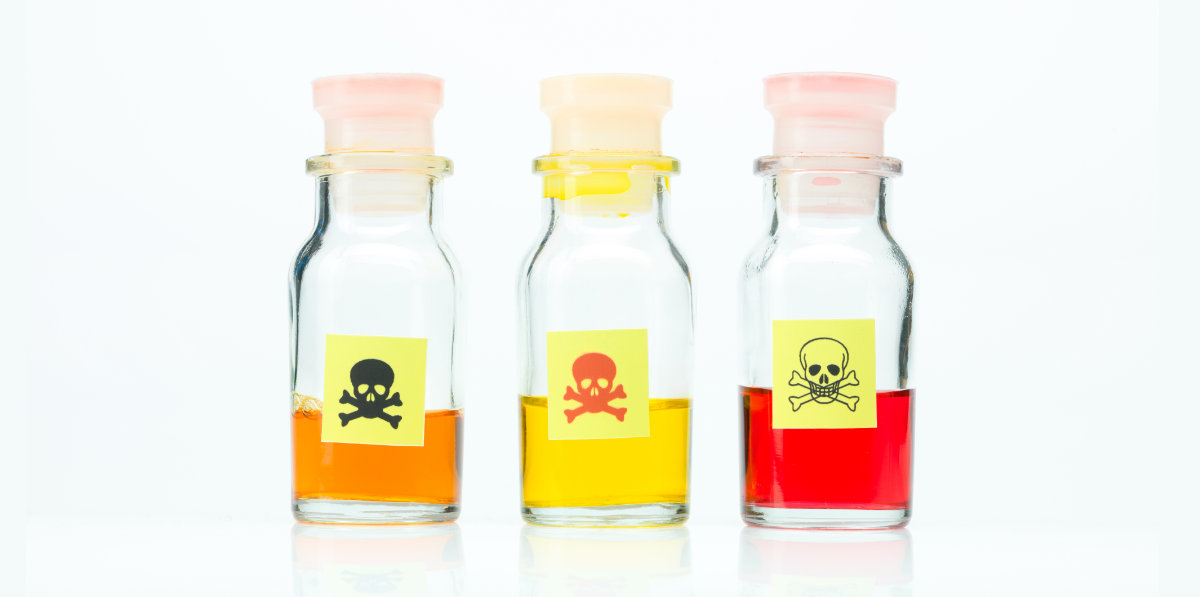
01 Nov Culture Killers. How much does ONE toxic employee really cost your company?
Buckle up, this is going to be a bumpy one.
We’re taking the rough road right into the costs of toxic behavior without getting lost in the type of toxic you may encounter. The backstabbing, high-performing bully is toxic. So is the more subtle, but eternally unmotivated, Eeyore on your team. For the sake of this article, we’re putting them all in the same pile.
And, yes. I see those of you scanning this page looking for (*hoping for*) solutions. I feel for you. We’ve all been where you are. There are several concrete steps people leaders and employees can take to address, neutralize, or expel bad behavior. As well as ways to proactively buffer your company & team from toxic hires. I’ll get into those in a future article. I promise. Right now, we’re focusing on the tangible and less concrete costs cultures pay for bad behavior in their employees. *Spoiler…there are a lot of them.*
I want to start by saying that as negative as this topic sounds, I’m an optimist (*Ok, an optimistic realist.) and I truly believe in the best in people and the capacity for cultures to heal and thrive. Toxic doesn’t have to kill us, but it can do irreparable damage if we don’t act. There’s lots of material that focuses on bringing out the best in people and ways to create and support the rockstars on your team. Truly, this IS important work (and rewarding) BUT you ignore their distressing opposite at your peril.
Toxic people suck. Literally.
I call them “Black Hole” employees because they effectively suck the life out of you, your team, and your company.
It’s not fun trying to manage them or the fallout they create. Like wounds in a body they slowly fester and draw healthy energy from those around them. There’s this sweet, viral video (you’ve probably seen it) that shows how kindness can spread from person to person. I love the idea that one, small, kind act can lead to so many more.
Kindness IS contagious.
It just turns out that toxic vibes seem to spread faster.
Stephen Dimmock & William C. Gerken addressed this in their HBR article How One Bad Employee Can Corrupt a Whole Team. They found it’s easier to spread disruptive behavior (like fraud & stealing) than good. “The contagiousness of employee fraud tells us that even your most honest employees become more likely to commit misconduct if they work alongside a dishonest individual. And while it would be nice to think that the honest employees would prompt the dishonest employees to better choices, that’s rarely the case.”
Basically bad juju at work is incredibly contagious…like a virus that’s on steroids. Which isn’t surprising if you’ve ever worked beside (or under) someone who is manipulative, hyper aggressive, dismissive or just plain incompetent. They create ripples across an organization and team. People caught in it tend to disengage or act out in their own ways due to frustration and fear.
*I still believe in the inherent goodness people.*
(Maybe watch that sappy “Acts of Kindness” video to boost your happiness or this one from Thailand – if you really want to get weepy.)
HOW MUCH DOES A TOXIC EMPLOYEE COST?
They tend to be the minority but they have a serious impact on companies in virtually every metric you can imagine: productivity, engagement, culture, brand reputation, employee retention, and profits. There’s a good deal of research showing how devastating a single toxic employee can be.
Dylan Minor of Kellogg School of Management released a study of 60,000 employees and had this to say, “If we were able to actually replace the average worker with the superstar, we’d be saving about $5,000. If we could replace a toxic worker with an average worker, we’d save about $13,000.” Here’s the study from Harvard Business School.
You read that right:
A black hole employee has 2 times more financial impact than a superstar.
Now imagine how much more it will cost your team if the toxic influence is from a manager or executive? I don’t believe the impacts of a black hole employee are linear, they seem to scale in an exponential fashion based upon the number of people that person intersects with and their level of influence.
A friend of mine, let’s call him Mark, has a story that perfectly illustrates this. He is a highly coveted technical engineer and has transitioned into management at a profitable, well funded, 6 year old tech firm with about 170 employees. He liked the culture and found the work both challenging and rewarding. Then they hired a new CFO and as he put it, “I couldn’t believe how fast everything seemed to turn on its head. I almost quit a job I really enjoyed… and he was only part of the company for 4 months.”
Course, the impacts of toxic behavior go beyond financial metrics. Let’s understand some of the other costs they create for their host companies. Will Felps, a professor at Rotterdam School of Management, says that one bad employee can cause a 30% to 40% drop in overall team performance. He was one of the researchers on the study How, When, And Why Bad Apples Spoil the Barrel: Negative Group Members and Dysfunctional Groups.
Here are some of the results on how employees were impacted by toxic individuals
– From Dylan Minor’s Harvard Business School study –
- 63% lost work time trying to avoid the black hole.
- 80% lost work time worrying about the black hole’s rude behavior.
- 66% said their performance got worse
- 78% said their commitment to the org went down because of toxic behavior
But it’s just one or two studies… right? It can’t be all that bad.
Unfortunately, those findings fall in line with another extensive, 14 year study of 14,000 managers, CEOs and employees by Christine Pearson (Professor at the Thunderbird School of Global Management) & Christine Porath (Professor of Management at Georgetown University). They focused on the costs of “incivility.”
Their report on the costs of uncivil behavior at work said, “We know two things for certain: Incivility is expensive, and few organizations recognize or take action to curtail it.” And worse, sometimes companies reward these abusive employees (My words, not theirs.). Trust in this, if the company or leadership professes values that are constantly undercut by a black hole employee and that person is then rewarded for bad behavior, the disconnect that creates has far-reaching costs. The most common I see is demoralization, increased avoidance, passive-aggressive responses, and quitting.
Porath and Peterson wanted to better understand peoples’ reactions to being treated badly by an uncivil colleague or boss. They went on to poll 800 managers and employees to see what kinds of costs this bad behavior created for businesses.
- 48% intentionally decreased their work effort.
- 47% intentionally decreased the time spent at work.
- 38% intentionally decreased the quality of their work.
- 80% lost work time worrying about the incident.
- 63% lost work time avoiding the offender.
- 66% said that their performance declined.
- 78% said that their commitment to the organization declined.
- 12% said that they left their job because of the uncivil treatment.
- 25% admitted to taking their frustration out on customers.
That’s a lot to digest. One thing that really that stands out in their poll is that targets of bad behavior will INTENTIONALLY decrease their effort, time spent working, and quality of work. Let that sink in. They rebel in a way that is likely to further harm their team and company and seem to feel justified doing it.
I’ve given you a lot of bad news.
You’ve gotten this far. You glutton for sad news.
I’m going to reward you with a fascinating study on “bad apples”
that also has some GOOD NEWS.
 Meet Will Felps. He’s a professor of Organizational Behavior at the University of South Wales. He conducted an experiment that showed the powerful effect of just one “bad apple” on a team.
Meet Will Felps. He’s a professor of Organizational Behavior at the University of South Wales. He conducted an experiment that showed the powerful effect of just one “bad apple” on a team.
40 groups (of 4 college students) were organized into teams and given a task to complete. The best team would get $400 to split. The catch: 1 person on some of the teams was an actor who’s sole task was to subtly disrupt the teams by being 1 of 3 types of toxic personality: The Jerk, The Slacker, or The Downer. Felps effectively put a toxic substance into a small group to see how much that 1 individual could upset the rest of the system.
The results were not encouraging. Every group Nick was in underperformed by 30 to 40%. It’s seriously compelling (and worrying) stuff. Nick’s verbal & physical cues were totally contagious: If he was “The Downer” in a group and acted tired (disengaged with his head on the table), by the end of the 45 minute session at least 1-2 other participants would be mirroring him!
In essence, the research shows that your worst team member is the best predictor of how your team performs.
SOME GOOD NEWS FOR YOUR CULTURE & TEAM
I promised you good news…here it is: There was an antidote to “The Toxic Nick Effect.”
“It’s the outlier group… They first came to my attention when Nick mentioned that there was one group that felt really different to him. This group performed well no matter what he did. Nick said it was mostly because of one guy.” Felps said.
The antidote was a student named Jonathan. When Jonathan was in a group with Nick, he gently waylaid Nick’s bad behavior with subtle thoughtfulness, humor, kindness, positive body language & active listening. He asked for feedback and ideas from everyone, including Nick. When the study results came in, the group’s performance, engagement & creativity were great: Nick was effectively neutralized.
Jonathan’s small actions and words had signifiant impacts on the groups he was in. Why? His behavior sent the rest of the group important cues that it was safe to engage. Jonathan was behaving like a great leader and colleague. (Listen to Will Felps interview and story on This American Life and you can also read about it as part of The Culture Code.)
So, while it’s true that a singe black hole employee can wreak havoc on team and in a company, it’s also true that people with strong, healthy interpersonal skills and knack for creating a sense of safety CAN buffer and even eliminate their influence.
Looking for more ways to triage, buffer and eliminate toxic behavior in your company?
Check out our article How to buffer and eliminate toxic behavior in your company culture.




Sorry, the comment form is closed at this time.